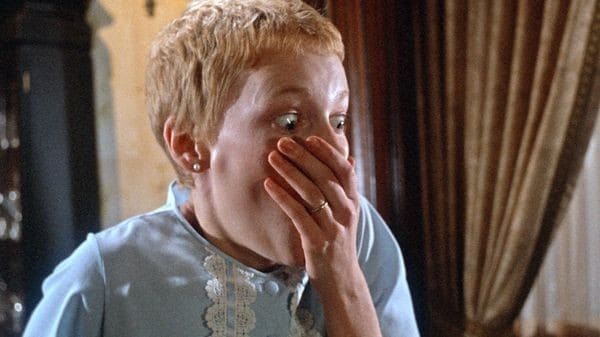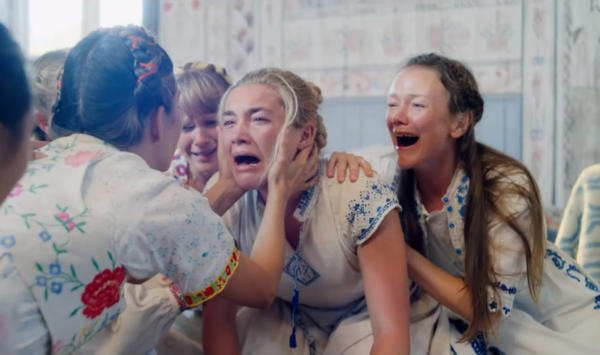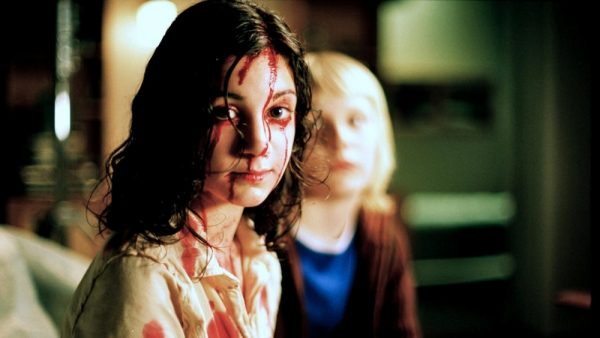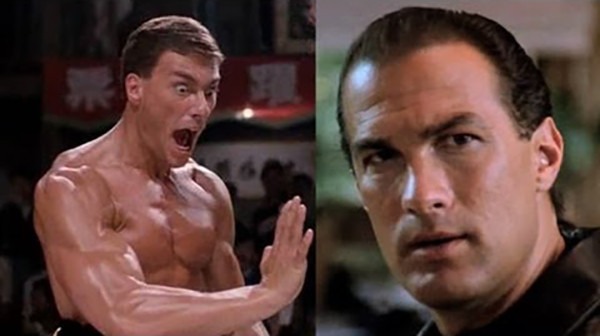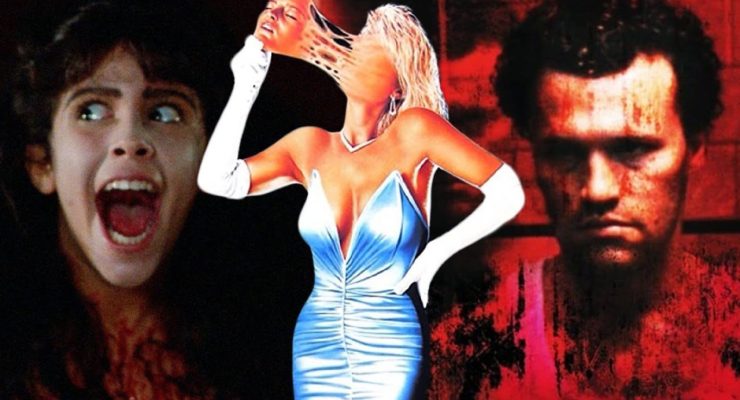Casey Chong with ten slow-burn horror movies that will fill you with dread…
One of the most interesting things about the horror genre is its diverse A-to-Z elements from body horror to found footage, dark fantasy, slasher and supernatural. Then, there’s the slow-burn horror and as the name suggests, this subgenre focuses on the deliberate build-up of the character(s) and the situation before the story gradually escalates into a thrilling payoff. A typical sense of dread with the use of music, sound design, imagery and directorial flair is often seen in slow-burn horror movies. Some viewers may dislike the approach due to the nature of its storytelling but if you love yourself some slow-burn horror, we have a list right here of ten of the very best worth checking out…
The Shining (1980)
“Here’s Johnny!” That Jack Nicholson’s iconic line remains one of the most defining pop-culture moments in the history of (slow-burn) horror movies. But before Nicholson’s Jack Torrance goes fully amok, Stanley Kubrick’s masterful direction in The Shining takes things slowly but surely in his deliberate approach right from the beginning. How a writer, who also happens to be a recovering alcoholic tries to get his story done while becoming the caretaker of the mountainside Overlook Hotel with his family (Shelley Duvall and Danny Lloyd).
Kubrick smartly uses the sense of isolation to evoke Jack Torrance’s mental health along with the enigmatic, supernatural-like occurrence that happens in the hotel before he reaches his breaking point. The movie also incorporates vivid imagery (the legendary Steadicam tracking shot of Danny riding on a plastic trike along the hallway before stumbling upon two identical twins, the flowing river of blood penetrating through the elevator) and the foreboding dread that keeps on coming until the all-hell-breaks-loose payoff.
Rosemary’s Baby (1968)
Mia Farrow’s then-famous pixie haircut styled by the legendary Vidal Sassoon may have been the highlight of the movie but there’s more to it in this Roman Polanski’s 1968 slow-burn horror classic. The kind of a textbook example of how a movie uses provocative themes – in this case, religious allegory and satanic practice – to a deliberately slow, mesmerizing effect.
Polanski takes his time telling his story of the titular character (Farrow, in one of the greatest performances of her storied career) and how her pregnancy instils ongoing fear and anxiety disorder. His unhurried pace also allows him to incorporate a lingering sense of unease with the mood that grows increasingly sinister as the movie progresses. By the time the movie finally lands with a chilling payoff, Rosemary’s Baby seals the deal as one of the most influential slow-burn horror ever made.
The Witch (2015)
There’s something evil lurking within the secluded forest of the 17th-century-set New England, allowing Robert Eggers in his assured directorial debut to envelop The Witch with layers of ominous dread. His slow-burn approach is the work of a skillful filmmaker who knows well how to make use of the claustrophobic setting and sound design along with the power of ambiguity and suggestion. He believes that emphasizing the mood and atmosphere can be scarier than the usual in-your-face jump scare, gore, and violence. The movie also famously put then-unknown Anya Taylor-Joy on the Hollywood map as one of the most promising young talents for the current generation.
Hereditary (2018)
Hereditary marks Ari Aster’s directorial debut, showcasing his flair for a deliberately paced elevated horror with excellent control in camera placements and an atmospheric visual palette right from the get-go. Aster, who also wrote the screenplay, may have trodden on familiar ground in exploring grief and dysfunctional family but the dread-inducing build-up is a masterstroke of how a slow-burn horror should be. Something is off that triggers the seemingly cursed family led by Annie (Toni Collette, in one of her most intense performances to date) and how her emotionally detached daughter, Charlie (Milly Shapiro) is often acting strange. Aster does a great job catching the viewers off guard at one point in the movie while creeping up his movie with ominous visuals, chilling sound design and Colin Stetson’s formidable score.
Midsommar (2019)
Following Hereditary, Ari Aster’s sophomore follow-up sees the writer-director seamlessly crossing over to the folk-horror territory in Midsommar. He pays homage to The Wicker Man, the 1973 genre classic and certainly not that ill-advised 2006 remake as the story follows a group of young friends (among them played by Florence Pugh and Jack Reynor) on a trip to Sweden’s titular festival somewhere in a remote village town.
Aster continues to employ the same deliberate slow-burn technique to absorbing results while filling in his movie with evocative imagery and a distinctive visual palette. The movie may have been longer than his 2018 debut but it sure doesn’t overstay its welcome, thanks to Aster’s brilliant direction. He knows well how to push the right button when it comes to the payoff, resulting in a series of eerie and shockingly graphic moments. If possible, do seek the 171-minute director’s cut which adds around 25 minutes’ worth of additional footage.
Don’t Look Now (1973)
Nicholas Roeg’s deliberate meditation on grief that impacts the bereaved couple played by Donald Sutherland and Julie Christie after the tragic death of their young daughter (Sharon Williams) is a classic slow-burner. He also delves deeper into the psychological and emotional insight of Sutherland and Christie’s character arcs while bringing out the best in their respective acting performances. The foreboding sense of dread seeps in slowly but surely with a moody color palette, atmospheric cinematography and recurring motifs dominate throughout the movie.
And not to forget, the ingenious mix-and-match editing style that subtly mirrors the enigmatic going-on before Roeg ends his movie with a shocking reveal, where you may or may not see it coming. Don’t Look Now may have been too slow by today’s standard (read: short attention spans) but those who are patient enough will be rewarded by Roeg’s sleight-of-hand direction meant to challenge your perception and interpretation in his ambiguous storytelling.
Session 9 (2001)
Brad Anderson’s works may have been inconsistent these days. But there was a time when he used to give us some notable genre fares and one of them includes Session 9 back in 2001. The narrative hook lies in the movie’s brilliant use of the real-life setting – the Danvers State Mental Hospital located in Massachusetts, which prominently takes place to tell a story about a five-person asbestos abatement crew assigned for a clean-up job at an abandoned mental asylum. Led by pre-CSI: Miami’s David Caruso in one of his most engaging performances to date, the movie isn’t only well-acted but credits also go to Anderson’s deliberate slow-burn approach in evoking genuine fear and dread that keeps you hooked until the end.
It Follows (2015)
Imagine if someone or worse, something is following you. This makes a chilling subject worth exploring as writer-director David Robert Mitchell explores the fear of the unknown associated with fear, dread and paranoia in It Follows. It’s worth noting this is only his second feature after his drastically different – a romantic comedy – in 2010’s The Myth of the American Sleepover and yet, he already established himself as an assured visual stylist.
His approach echoes the ‘70s and ‘80s-style horror movies while incorporating old-school camera placements and shot compositions that evoke John Carpenter’s earlier works, notably his seminal Halloween. He relies heavily on the mood and atmosphere accentuated by Disasterpeace’s synthesizer-heavy, yet eerie score. It Follows also features Maika Monroe’s engaging central performance while Mitchell manages to slip into the allegorical context of STD and teenage sex beyond the movie’s genre convention.
Let the Right One In (2008)
This Swedish import from the director who would go on to make the intricate, old-school spy thriller Tinker Tailor Soldier Spy demonstrates his flair for a deliberate slow-burn horror infused with his distinctive arthouse sensibility. Let the Right One In may have been dealing with the oft-seen vampire genre but Tomas Alfredson, working from John Ajvide Lindqvist’s adapted screenplay of the latter’s 2004 novel of the same name, explores the interesting angle of an unlikely relationship between a lonely boy (Kåre Hedebrant) and a mysterious girl (Lina Leandersson), who turns out to be a vampire. The coming-of-age and romance approach is what distinguishes Let the Right One In while Alfredson imbues his movie with moody visuals and subtle character-driven drama. The movie is also notable for its chilling, yet violent payoff set in a swimming pool.
The Orphanage (2007)
Way before J.A. Bayona explores different genre territory from disaster (The Impossible) to fantasy (A Monster Calls), sci-fi (Jurassic World: Fallen Kingdom) and true story (Society of the Snow), the acclaimed Spanish filmmaker got his start directing a supernatural horror. The kind of an old-school ghost story done in a classical style as the story follows a little boy who befriended an invisible new “friend” in the titular old orphanage. Guillermo del Toro, who serves as the executive producer, has his Gothic-influenced visual prints all over the movie but Bayona proves to be an ace visual stylist, incorporating the brilliant use of sound, shadows, and shapes to bring out the creeping sense of dread.
What are your favourite slow burn horror movies? Let us know on our social channels @FlickeringMyth…
Casey Chong
Flickering Myth’s horror movie THE BABY IN THE BASKET is available now via Prime Video and Tubi in the US and Prime Video, Apple TV and Sky Store in the UK as well as in stores and Amazon and HMV on DVD.


